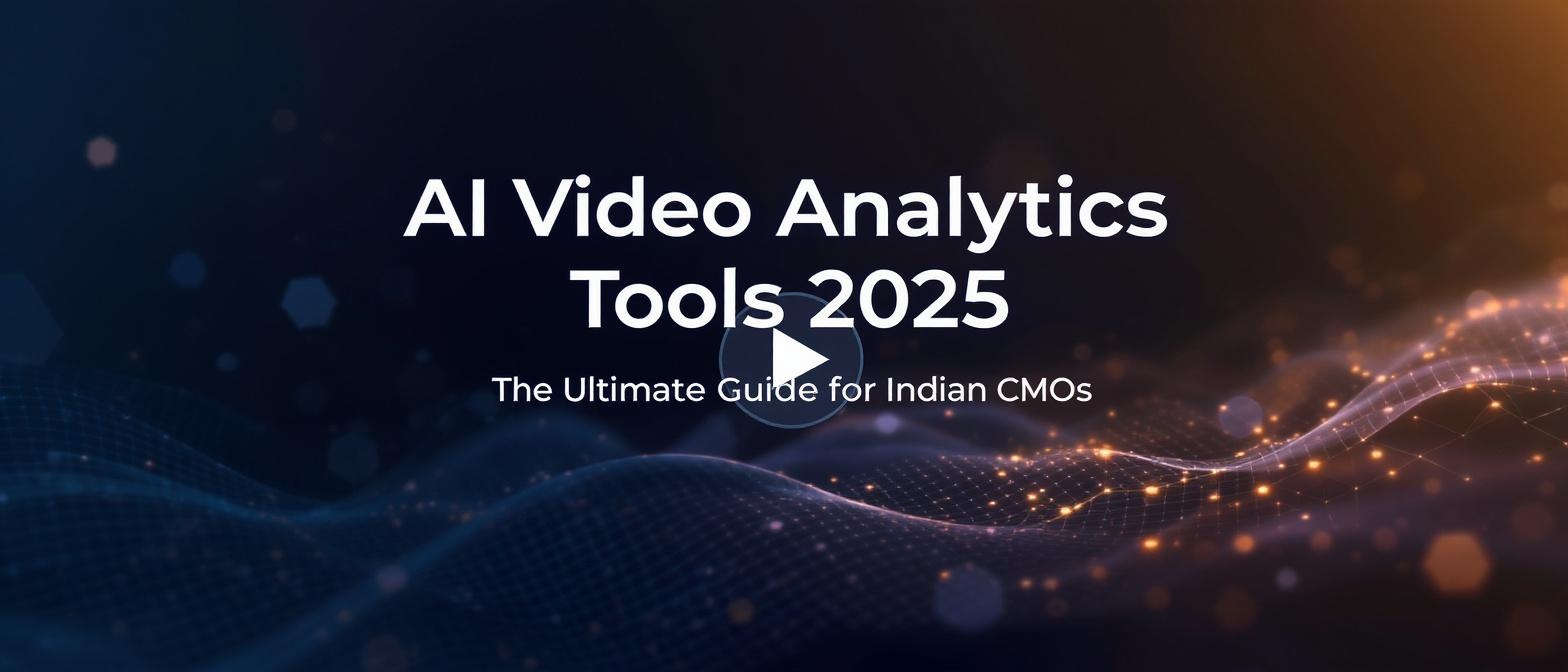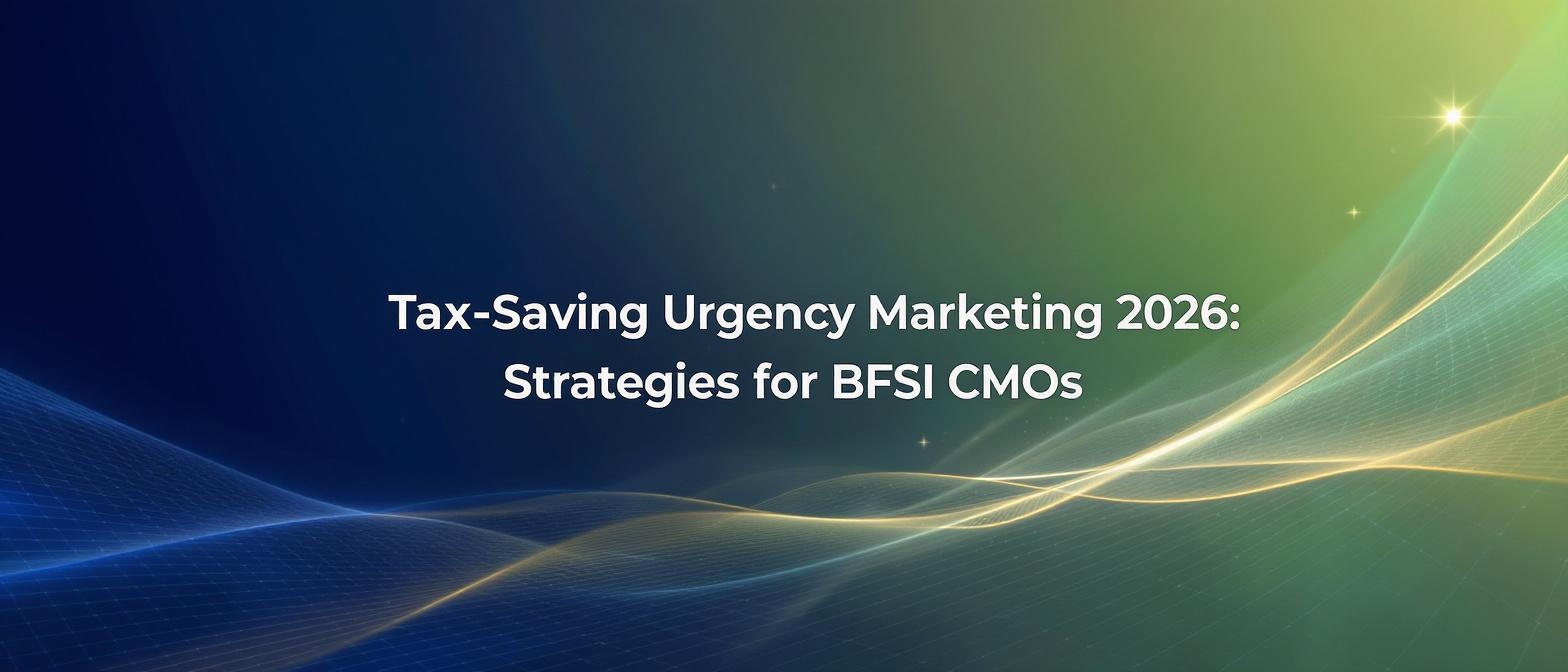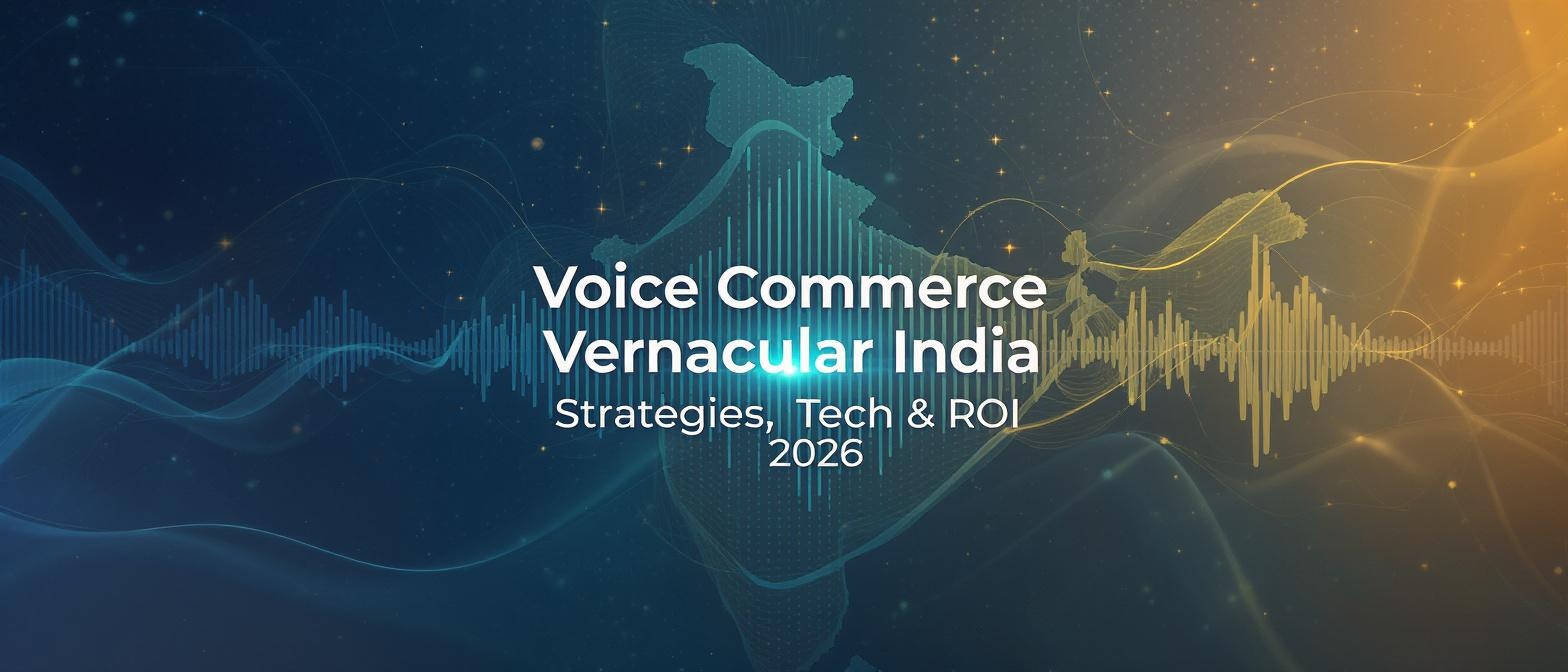AI Video Analytics Tools 2025: The Ultimate Guide for CMOs & Marketing Directors in India
Estimated reading time: ~11 minutes
Key Takeaways
- AI video analytics is crucial for data-driven marketing success in 2025.
- Predictive analytics helps forecast campaign performance before launch.
- Multi-touch attribution ensures accurate ROI measurement across the entire journey.
- Tools like Studio by TrueFan AI integrate creation and analytics for streamlined workflows.
- Protecting user data with ethical AI practices fosters trust and compliance.
In the rapidly evolving digital landscape of 2025, video is no longer just a component of marketing strategy—it is the cornerstone. For Chief Marketing Officers and Marketing Directors in India, the challenge has shifted from simply creating video content to proving its value with hard data. This is where AI video analytics tools 2025 come into play, serving as next-generation platforms that use machine learning and computer vision to deliver real-time, actionable insights on video performance.
Source: Wyzowl
The surge in video consumption across every conceivable platform, from social media feeds to corporate websites, has created an unprecedented amount of data. With this explosion of content, the C-suite is rightfully demanding concrete metrics and undeniable proof of return on investment. The era of vanity metrics is over. Today, success hinges on robust video marketing ROI measurement, a clear-cut process of calculating the returns generated from video campaigns against the cost of their production and distribution. This guide will navigate the complexities of this new frontier, exploring the tools, strategies, and future trends that will define video marketing success in India and beyond.
I. Understanding AI Video Analytics in 2025: Beyond the View Count
At its core, AI video analytics is the sophisticated integration of deep learning, computer vision, and big-data processing to achieve what was previously impossible: understanding not just how many people watched a video, but who they were, how they engaged, and what they did next. It moves beyond surface-level video engagement analytics to provide a multi-dimensional view of performance, enabling marketers to optimize campaigns with surgical precision.
A game-changing subset of this technology is predictive video analytics AI. These are highly advanced algorithms designed to forecast which video creative, format, or even posting time will maximize engagement and conversions before a single rupee is spent on ad placement.
Source: Scylla.ai
Key capabilities of predictive AI include:
- Pre-Launch Content Scoring: Predictive models analyze vast datasets of past video performance—both internal and industry-wide—to score new content on its likelihood of success before it goes live.
- Audience Behavior Forecasting: By analyzing patterns in viewer data, these tools can predict how specific audience segments will react to different messages, tones, or calls-to-action, enabling hyper-personalization at scale.
- Channel Optimization: Predictive analytics can recommend the optimal platform and time for deploying a video to reach the target audience when they are most receptive.
Crucially, modern video conversion tracking ties these insights back to the complete user journey. It’s no longer enough to know a video was watched. Marketers must understand how that view on Instagram led to a website visit, which then contributed to a product demo request and, ultimately, a sale. AI analytics connects these dots, providing a clear line of sight from video engagement to revenue.
II. The Anatomy of a Modern Platform: Key Features & Capabilities
The most effective AI video analytics platforms are more than just data repositories; they are strategic command centers. They are built with specific features that transform raw data into intelligent, actionable guidance.
A. The AI Video Metrics Dashboard: Your Central Hub for Insights
Forget static spreadsheets and siloed reports. An AI video metrics dashboard is a centralized, interactive user interface that visualizes key performance indicators (KPIs) in real time. This is the mission control for any data-driven marketing leader.
Essential metrics displayed include:
- Play Rate: The percentage of visitors who clicked play and started the video.
- Completion Rate: The percentage of viewers who watched the video to the end.
- Click-Through Rate (CTR): The percentage of viewers who clicked on a call-to-action within the video.
- Shares & Social Engagement: How often the video is being shared and the nature of the conversation around it.
- Conversion Rate: The percentage of viewers who completed a desired action (e.g., form fill, purchase) after watching.
However, the “AI” component is what makes these dashboards truly powerful. They provide automated, AI-driven insights that a human analyst might miss. For example, the system can send an alert when a video’s drop-off rate is abnormally high at a specific timestamp, flagging a potential creative issue. It can also recommend A/B tests, such as changing a thumbnail or call-to-action, based on predictive models of what is most likely to improve performance.
Source: Whatagraph
B. Granular Performance Tracking & Conversion Optimization
To truly understand performance, you need to go beyond the “what” and uncover the “why.” Video performance tracking software records granular viewer behavior, such as pause points, re-watches, and the exact moment a viewer drops off. This data is invaluable for creative teams looking to refine their storytelling and pacing.
In the context of the Indian market, conversion optimization video analytics India is about connecting this viewer behavior directly to business outcomes. This is achieved through:
- Video Heatmaps: Visual overlays that show which parts of the video player viewers interacted with the most.
- Interaction Events: Tracking in-video events like clicks on product pop-ups, form submissions initiated from the video, or e-commerce transactions that occur during or immediately after a viewing session.
- CRM & MAP Integration: The most advanced platforms integrate seamlessly with Customer Relationship Management and Marketing Automation Platforms. This allows a company to see that a specific lead watched 85% of a product demo video before being contacted by the sales team, providing critical context for the conversation.
Platforms like Studio by TrueFan AI enable the creation of diverse video assets that can be tracked with this level of granularity, allowing marketing teams to test which styles, messages, or avatars drive the most meaningful engagement and conversions.
III. Proving the Value: Video Marketing ROI & Attribution Models
For every CMO, the ultimate measure of success is ROI. AI analytics has transformed video marketing ROI measurement from a complex, often ambiguous calculation into a more precise and predictable science.
Methods for Measuring ROI
There are two primary approaches to calculating video ROI:
-
The Basic Formula: This is the foundational calculation every marketer should know.
(Total Revenue from Video – Total Video Spend) ÷ Total Video Spend
Total Video Spend includes costs of production, distribution, ad spend, and platform fees.
Total Revenue from Video is the revenue directly tied to conversions from video campaigns. - AI-Enhanced ROI: This is where modern platforms truly shine. AI models blend historical campaign data with predictive factors to create forward-looking ROI estimates. For instance, an AI might assign a higher value to a viewer who watched 90% of a video compared to one who watched 10%. By incorporating engagement scores, viewer firmographics, and historical customer value, AI provides a much more nuanced and accurate picture of a campaign’s true financial impact. The latest data shows that 68% of businesses report an improved content marketing ROI simply by adopting AI tools, underscoring their financial impact.
Solutions like Studio by TrueFan AI demonstrate ROI through streamlined production and enhanced engagement. By reducing the time and cost to create high-quality, multilingual videos, they lower the “Total Video Spend” while their personalized avatars boost the engagement metrics that drive revenue.
The Role of Video Attribution Analytics
In a multi-channel world, the last touchpoint before a conversion rarely tells the whole story. A customer might see a video ad on LinkedIn, watch a product review on YouTube, and then click a search ad before making a purchase. Video attribution analytics addresses this complexity.
It uses multi-touch attribution models—a method of assigning weighted credit to each marketing interaction along the customer journey—to map the influence of every video view or click. This prevents the common mistake of overvaluing the final click and undervaluing the top-of-funnel video content that initiated the customer’s journey.
A powerful example of this in action comes from Vidopix, which launched its AI-powered video analytics in the Indian market. In April 2025, they reported a remarkable 35% uplift in customer engagement and a 20% higher ROI within their first quarter of operation, showcasing the immediate impact of applying AI to video strategy.
Source: Precedence Research
IV. The 2025 Platform Landscape: A Comparative Overview
The market for AI video analytics is crowded and competitive. Choosing the right platform depends on your specific needs, existing tech stack, and business goals. Here’s a high-level video analytics platforms comparison.
| Platform | Key Strengths | Considerations | Best For |
|---|---|---|---|
| Whatagraph | Excellent cross-channel dashboards, integrates data from 50+ sources. | Fewer deep, video-specific AI insights compared to specialized tools. | Teams needing a unified view of all marketing channels, with video as one component. |
| Databox | Highly visual and customizable performance dashboards, easy to set up. | Limited granular video metrics like heatmaps or second-by-second drop-off analysis. | SMBs and marketing agencies focused on high-level performance reporting. |
| Lumana | Real-time predictive alerts and AI-driven anomaly detection. | As a newer player, the feature set is still evolving. | Enterprises looking for cutting-edge, proactive video performance monitoring. |
| Eagle Eye | Cloud-first platform with a strong focus on security and surveillance analytics. | Marketing use cases may require integration with legacy systems; not marketing-native. | Organizations where video analytics serves both security and operational purposes. |
| Vidopix | Recently launched in India with a focus on AI video analytics; strong local support. | Newer to the market, so brand recognition and integration library are growing. | Indian enterprises looking for a specialized, locally-supported AI video analytics solution. |
| Studio by TrueFan AI | A self-serve "Canva for AI videos" with pre-licensed avatars, script-to-video, and API analytics integration. | Primarily focused on video creation, with analytics integrated via API rather than a standalone dashboard. | Marketing teams needing to create personalized video at scale and pipe performance data into their BI tools. |
Emerging Trends Shaping the Market
- Edge Computing: Processing analytics data directly on the device for faster, more private analysis.
- Hyper-Personalization: Using AI to automatically tailor video content for individual viewers in real time.
- Platform Consolidation: Larger marketing cloud companies are acquiring specialized analytics firms to provide integrated solutions.
V. Integration in Action: Studio by TrueFan AI's Analytics Capabilities
While many platforms focus solely on analyzing existing videos, a new wave of tools is integrating analytics directly with the creation process. Studio by TrueFan AI is a prime example of this powerful synergy.
It is a browser-based platform designed to empower marketers to generate professional, lip-synced videos in minutes. Users can choose from a roster of pre-licensed AI avatars (like Gunika, Annie, and Aryan), input a script, and generate videos in over 175 languages and multiple aspect ratios (16:9 for YouTube, 1:1 for Instagram feeds, 9:16 for Reels and Shorts).
The true power lies in its analytics integration. Recognizing that creation without measurement is a recipe for failure, the platform is built to connect with the broader analytics ecosystem:
- Webhooks and API Access: Performance data from videos created in the platform can be fed directly into a company’s central AI video metrics dashboard or data warehouse. This allows for a closed-loop system where creation informs analysis, and analysis refines creation.
- Custom Real-Time Metrics Portal: For enterprise clients like Zomato and Goibibo, custom portals are developed to track video marketing KPIs 2025 in real time, enabling rapid optimization of avatars, scripts, or languages.
By combining scalable video creation with flexible data integration, Studio by TrueFan AI's 175+ language support and AI avatars provide a comprehensive solution for modern marketing teams aiming to leverage predictive video analytics AI across diverse, global audiences.
VI. Real-World Impact: Case Studies & Applications
The theoretical benefits of AI video analytics are compelling, but their real-world applications are what truly demonstrate their power to drive business growth.
- Meta's Automated Ad Creative: Meta (formerly Facebook) heavily utilizes AI to test thousands of variations of video ad creative automatically. By analyzing which combinations of visuals, text, and CTAs perform best, their system drove a 28% higher click-through rate for advertisers using the feature.
Source: Wyzowl
- TikTok's AI-Powered Creative Tools: TikTok provides advertisers with AI-driven tools that analyze top-performing content and provide recommendations for creating more effective, platform-native video ads. Brands using these insights saw their video completion rates improve by an average of 15%.
Source: Wyzowl
- TrueFan Enterprise Clients in India:
- Zomato: The food delivery giant leveraged personalized video invites generated through TrueFan's platform to re-engage dormant users, resulting in a 40% boost in user sign-ups from the target cohort.
- Goibibo: The travel portal used dynamic video offers tailored to a user’s browsing history, reducing Cost Per Lead (CPL) by 25% compared to static image ads.
These examples of successful video campaign performance analysis highlight a clear trend: companies that embrace AI to both create and measure their video content are achieving a significant competitive advantage and superior video marketing ROI measurement.
VII. The Horizon: Future Outlook & Ethical Considerations
The field of AI video analytics is advancing at a breakneck pace. As we look toward the latter half of the decade, the metrics we use to measure success will become even more sophisticated.
Future Video Marketing KPIs 2025+
- Intent Signals: AI will analyze on-screen behavior to determine a viewer’s purchase intent without requiring a click.
- Emotion Recognition Scores: With user consent, computer vision will gauge emotional response to video content, providing invaluable creative feedback.
- Cross-Device Attribution: More robust models will connect a video view on a connected TV to a subsequent mobile purchase, closing attribution gaps.
Ethical AI and Data Privacy: A Non-Negotiable Foundation
With this power comes great responsibility. The use of AI in analytics raises critical ethical questions, particularly around data privacy and consent. For brands operating in India, a market with a growing focus on data protection, this is paramount.
Marketers must prioritize consent frameworks, ensuring users explicitly opt-in to any form of personalized data collection. Furthermore, platforms themselves must build in safeguards. This includes “walled garden” content moderation systems that use AI to automatically block hate speech or disinformation, protecting brand safety and consumer trust.
Source: ETGovernment India
VIII. Conclusion: From Data to Dominance
The message for CMOs and Marketing Directors in 2025 is clear: intuition and experience are vital, but they are no longer enough. AI video analytics tools 2025 are the essential co-pilots for navigating the modern marketing landscape. They empower leaders to move beyond guesswork, providing the capabilities to measure, optimize, and predict the success of video campaigns with unprecedented accuracy.
By embracing these technologies, you can transform your video marketing from a cost center into a predictable, scalable revenue engine. Proving the value of your efforts with concrete data is the key to securing bigger budgets, driving meaningful growth, and solidifying marketing’s role as a critical driver of business success.
To take the first step in this journey, consider exploring how you can streamline your content production while laying a foundation for robust analytics. A trial of a self-serve AI video creation platform like Studio by TrueFan AI, combined with its integrated analytics capabilities, can provide a rapid path to demonstrating impressive video marketing ROI measurement and achieving your campaign goals.
Frequently Asked Questions
1. What is the biggest difference between traditional video analytics and AI video analytics?
Traditional analytics primarily reports on historical data (e.g., views, likes, shares). AI video analytics adds a layer of intelligence, using machine learning to interpret data, identify complex patterns, generate insights, and even predict future outcomes, such as which creative will perform best.
2. How can a small marketing team in India get started with AI video analytics without a huge budget?
Start with platforms that have integrated analytics or offer free/trial tiers. Many social media platforms like YouTube and Meta have powerful, free analytics tools that use AI. For creation and analysis in one place, picking a solution that combines both can be very cost-effective. The key is to begin tracking core metrics and use that data to make incremental improvements.
3. What are the main challenges when integrating video analytics with a CRM like Salesforce?
The primary challenges are data mapping and attribution. You need to ensure that the user identity from the video platform can be correctly matched to a lead in your CRM. This often requires a Customer Data Platform or careful technical implementation to connect audience journeys across different systems.
4. Can AI video analytics be used for more than just marketing?
Absolutely. AI video analytics is used in retail for shopper behavior tracking, in security for intrusion detection and facial recognition, and more. Its robustness in these areas translates into powerful, reliable capabilities for marketers.
5. How do I ensure the data privacy of my customers when using these tools?
Work with vendors that are transparent about their data policies and compliant with regulations like GDPR and local data protection laws. Always prioritize user consent for data collection, and anonymize data wherever possible. Platforms like Studio by TrueFan AI are designed with privacy in mind, processing data within secure boundaries.





